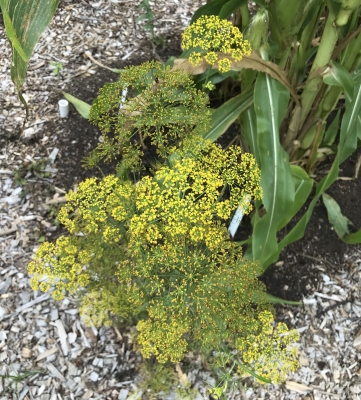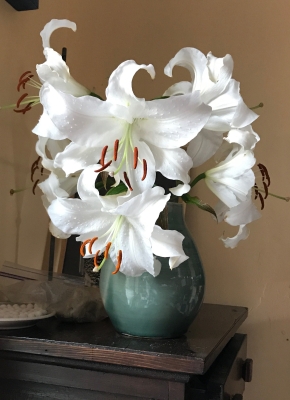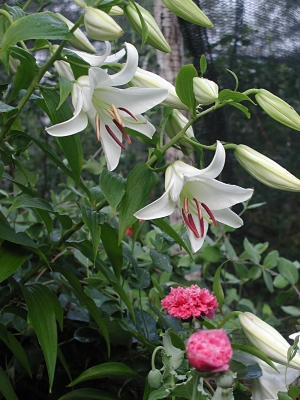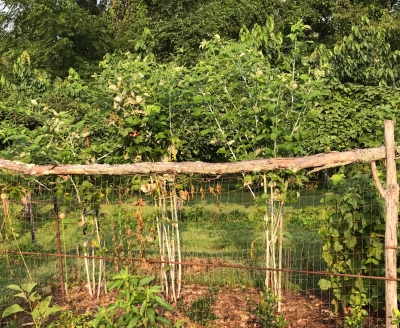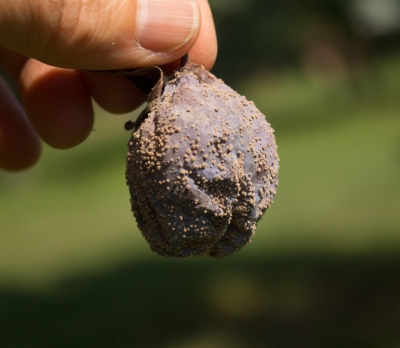Whoosh!
Whew! How quickly this growing season seems to have scooted by. I am putting the last plants of the season into the vegetable garden today. These were transplants of Shuko and Prize Choy bok choy, and Blue napa cabbage. I’m eyeing some lettuce transplants, and if I decide that they’re sufficiently large to transplant, they’ll share a bed with the cabbages.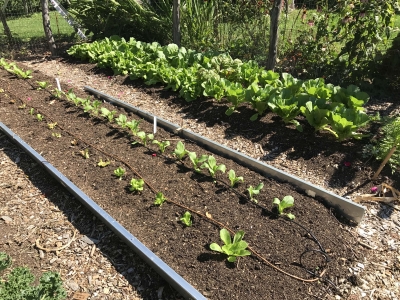
Reconsidering, the end of the gardening season isn’t really drawing nigh. The cabbages won’t be large enough to make a real contribution to a stir fry or a batch of kim chi for at least another month. And then, with cool weather and shorter days slowing growth, the plants will just sit there in the garden, doing fine, patiently awaiting harvest.
Other plants awaiting harvest into autumn from plantings over the past few weeks are Hakurei turnips, crunchy, sweet, and spicy fresh in salads, daikon and Watermelon radishes, for salads or kim chi, and, also for salads, lettuce, spinach, arugula, and mustard greens. The last salad stuff will be endive, sown back in early July, and transplanted in early August in a bed previously home to the first planting of bush beans.
The season’s various plantings mesh together nicely. Those bok choy and napa cabbages went into a bed just cleared from the first planting of sweet corn. The bed previously planted with of lettuce, arugula, and spinach seed followed on the heels of onions sown indoors in February, transplanted into the bed in May, and harvested a few weeks ago.
A Whole New Garden, Now
In addition to good timing, the autumn garden — which is like having a whole other garden, except it’s in the same place as the summer garden — demands good soil. That soil has to support this whole other wave of plants.
Through summer, I looked upon any weeds I encountered as potential factories for making more weeds, via spreading seeds and/or roots. Left alone, that weed and its progeny would rob food and water meant for my cabbages and lettuces, and shade my plants into submission.
With that in mind, when I cleared the beds of spent corn or bean plants, I pulled out every weed in addition to the spent vegetable plants. I tried to get roots and all for each weed, which isn’t that difficult if you keep up weeding all summer.
After clearing a bed of weeds and vegetable plants, down went a carpet of compost.  A one to two inches deep layer smothers most weeds sprouting from seeds as well as provides nourishment for multiple waves of vegetable plants — for a whole year! (Also provides food and habitat for beneficial soil organisms, protects the surface from washing, and increases the soil’s ability to hold on to both air and moisture.)
A one to two inches deep layer smothers most weeds sprouting from seeds as well as provides nourishment for multiple waves of vegetable plants — for a whole year! (Also provides food and habitat for beneficial soil organisms, protects the surface from washing, and increases the soil’s ability to hold on to both air and moisture.)
So the season hasn’t scooted by; the autumn season is just beginning. There’s still some room for reflecting on the season up to this point. Most notable has been this year’s pear crop.
Pears: Easy To Grow, Hard To Harvest (Correctly)
Among the common tree fruits, pears are the easiest to grow. They’re a bit slow to come into production but are often free of significant pest problems. They’re also pretty trees, all season long, especially the Asian pears.
It’s not all smooth sailing from planting to flowering to harvest to eating for European pears, which includes Bartlett, Bosc, Anjou, and other pears with which most people are most familiar. The problem is knowing when to harvest them. Pears ripen from the inside out, so need to be harvested when mature (whenever that is), then ripened in a (preferably cool) room indoors. Left hanging on the tree too long, and the fruit tastes sleepy, at best, or has turned mushy; harvested too soon and the fruit never loses a grassy flavor. (Asian pears are easy to harvest. When they taste good right off the tree, they’re ripe and ready.)

Frederick Clapp pear tree
Appearance of the fruit, calendar date, and ease of separation from the stem when lifted with a twist are all indicators of ripeness. I’m finding that few fruits dropping from a tree are a good sign that it’s time, or almost time, to harvest.
Pears, A Book

As luck would have it, a beautiful new book, The Book of Pears, by Joan Morgan, arrived in the mail just as pear harvest was beginning (with the variety of Harrow Delight). Replete with old and new illustrations depicting the history of pear cultivation, a large portion of the book offers intimate descriptions and history of many varieties. Beurrée d’Amanlis, for instance, which I grow, originated in a small village in Brittany, but became popular after 1826, when Louis Noisette, a Paris nurseryman, received some fruit from his son, director of the Nantes Botanic Garden.
The book devotes a little space to growing and cooking the fruit. I, of course, immediately looked to see what Ms. Morgan has to say about harvest: “ . . . the next challenge is when to harvest the crop . . . Once they begin to drop from the tree it is time to harvest . . . Experience with your own trees will tell you when to pick.” How true. I’ve grown the variety Magness longest, and usually can pick them to ripen off the tree to perfection. And perfection for Magness means biting into one of the best tasting of all pears.

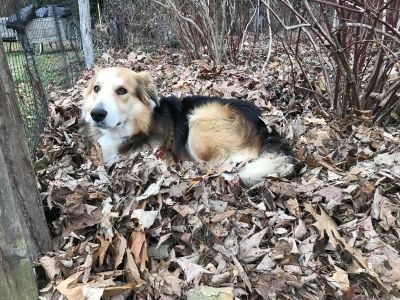
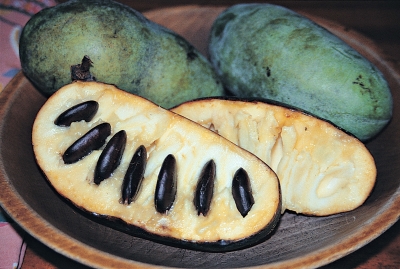
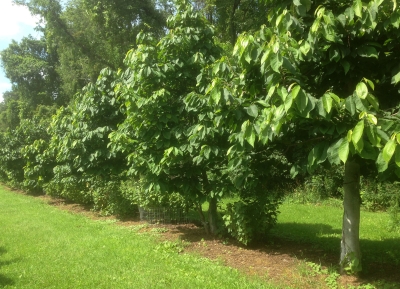
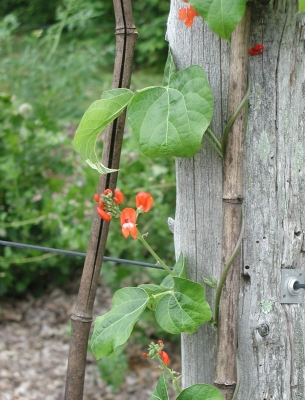
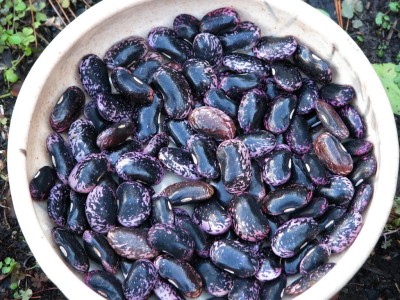

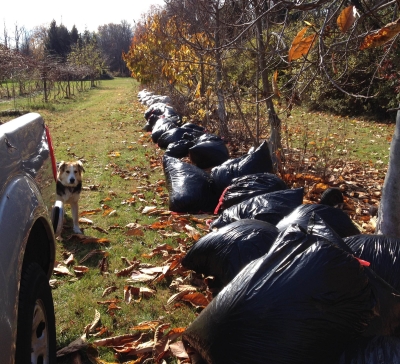
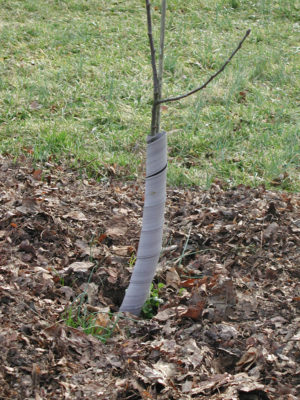
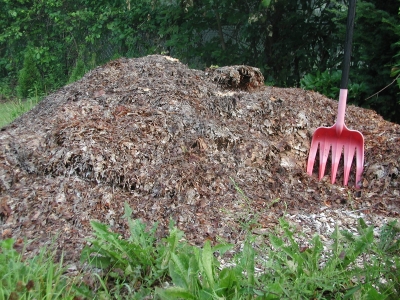
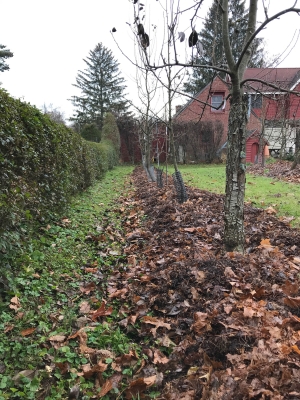
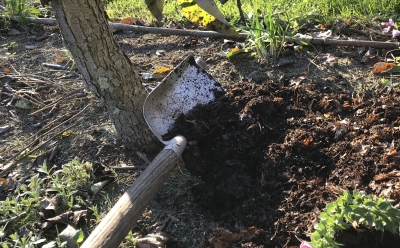
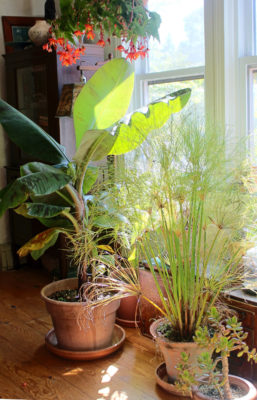
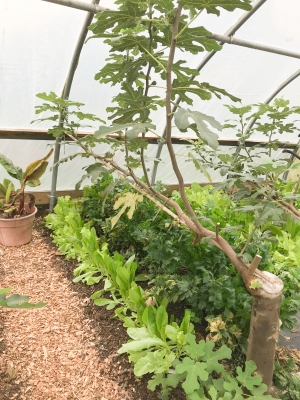

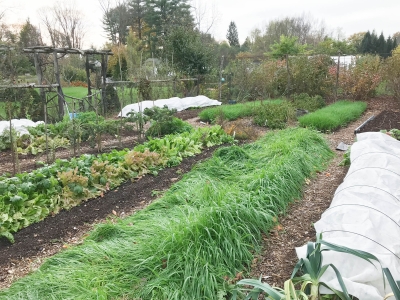
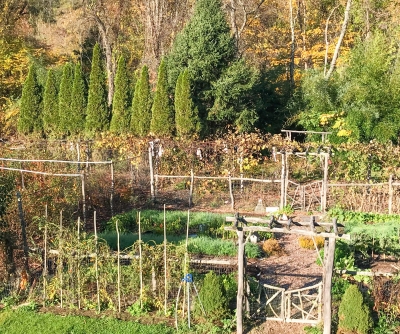

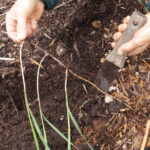
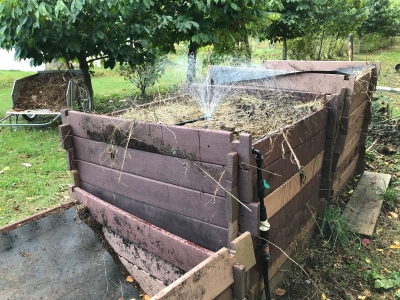

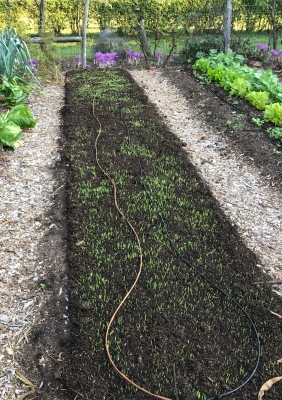
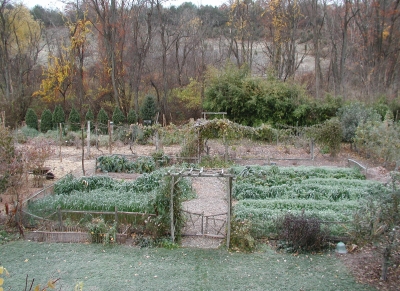
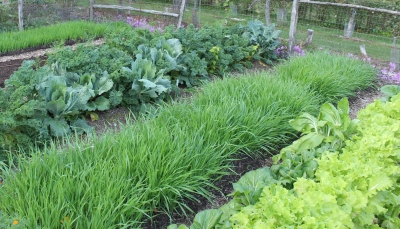

 A one to two inches deep layer smothers most weeds sprouting from seeds as well as provides nourishment for multiple waves of vegetable plants — for a whole year! (Also provides food and habitat for beneficial soil organisms, protects the surface from washing, and increases the soil’s ability to hold on to both air and moisture.)
A one to two inches deep layer smothers most weeds sprouting from seeds as well as provides nourishment for multiple waves of vegetable plants — for a whole year! (Also provides food and habitat for beneficial soil organisms, protects the surface from washing, and increases the soil’s ability to hold on to both air and moisture.)

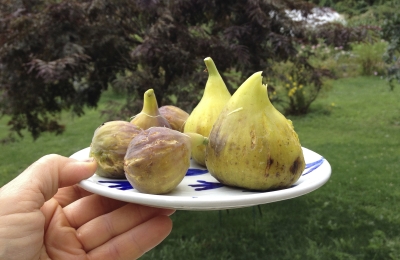 Mealybugs look, unassumingly, like tiny tufts of white cotton, but beneath their benign exteriors are hungry insect. They injects their needle-like probiscis into stems, fruits, and leaves, and suck life from the plants, or at least, weaken the plants and make the fruits hardly edible.
Mealybugs look, unassumingly, like tiny tufts of white cotton, but beneath their benign exteriors are hungry insect. They injects their needle-like probiscis into stems, fruits, and leaves, and suck life from the plants, or at least, weaken the plants and make the fruits hardly edible.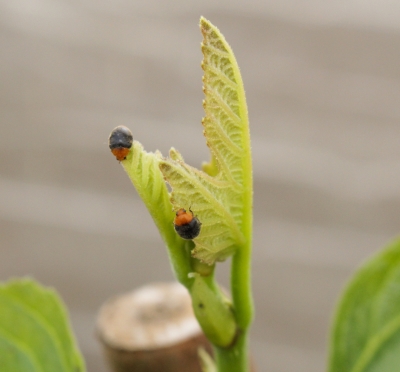
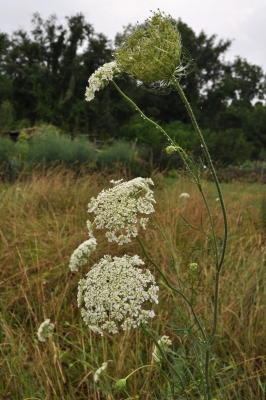 The Carrot Family Helps Out
The Carrot Family Helps Out